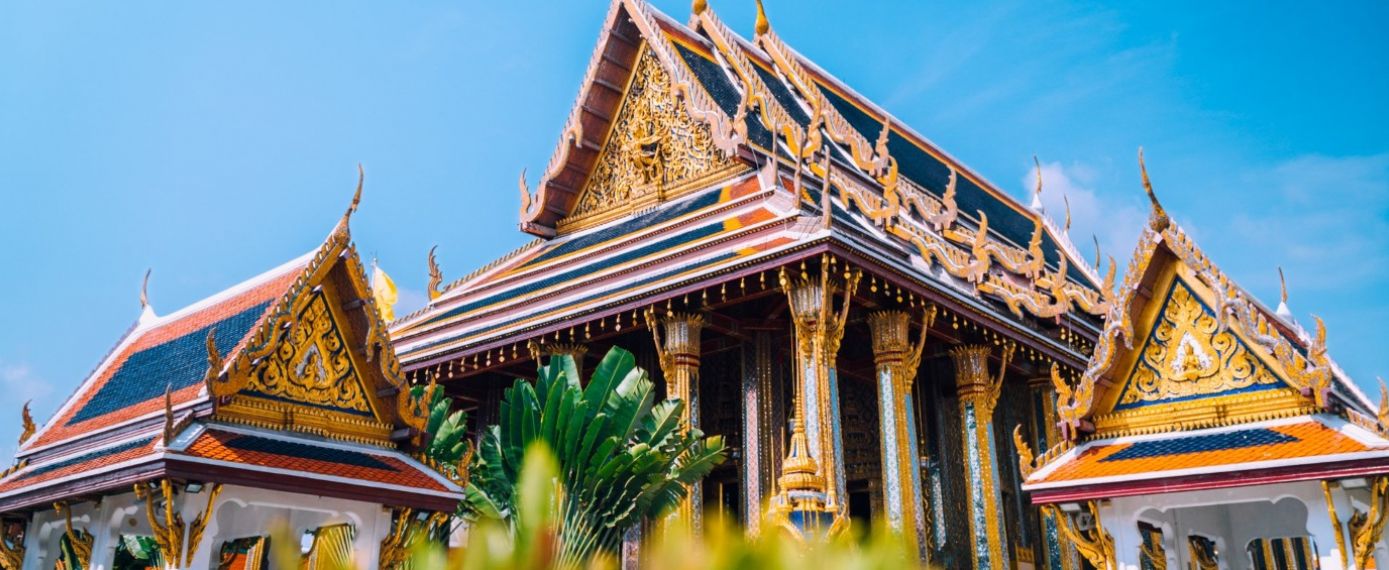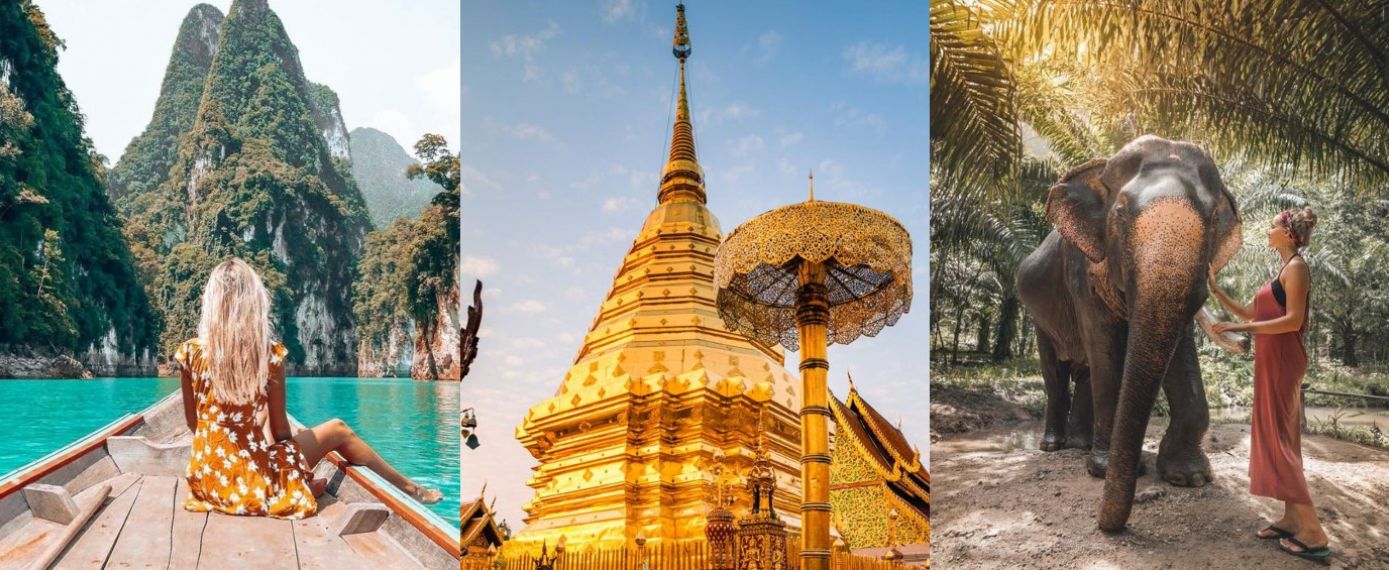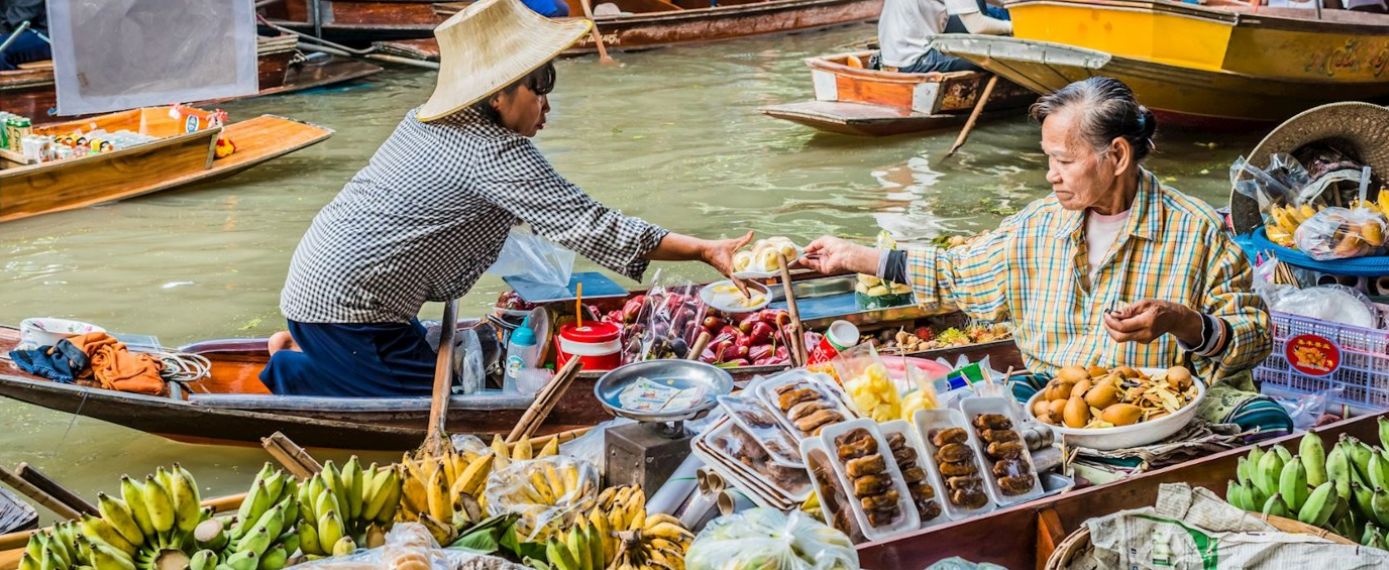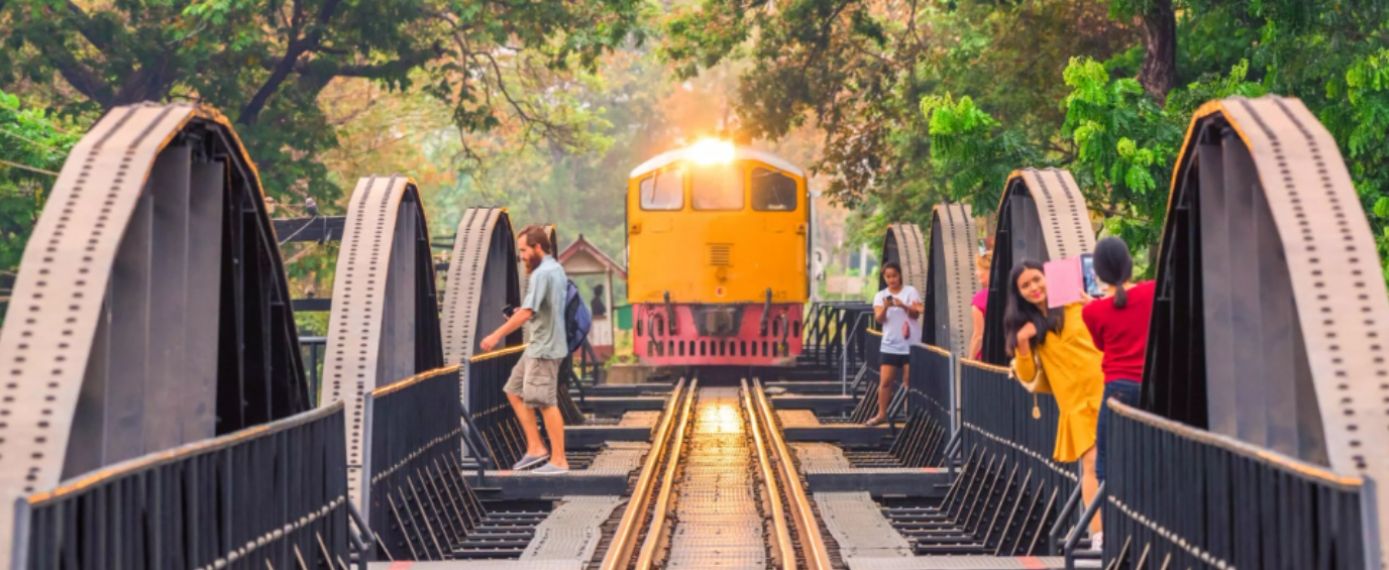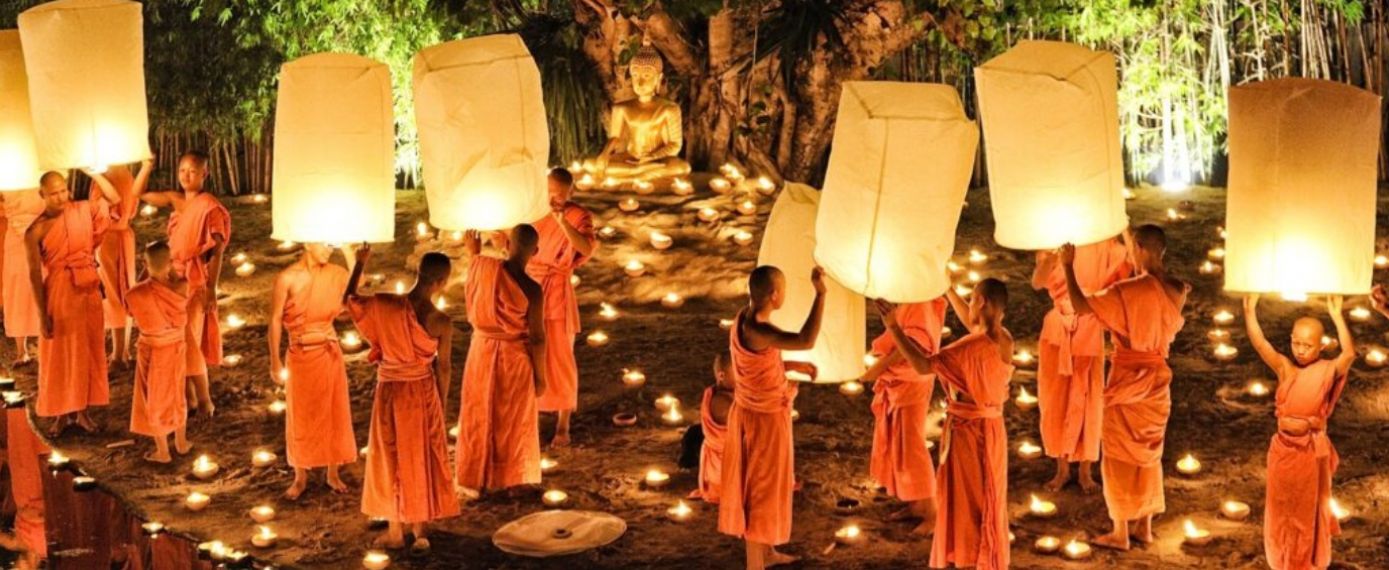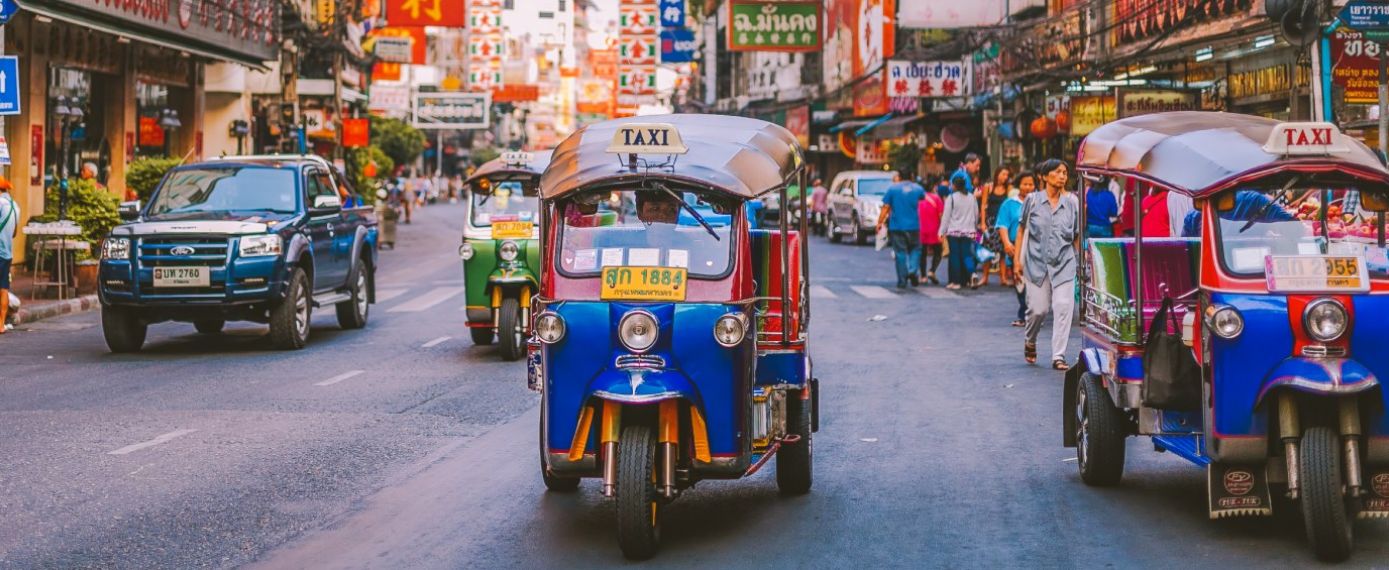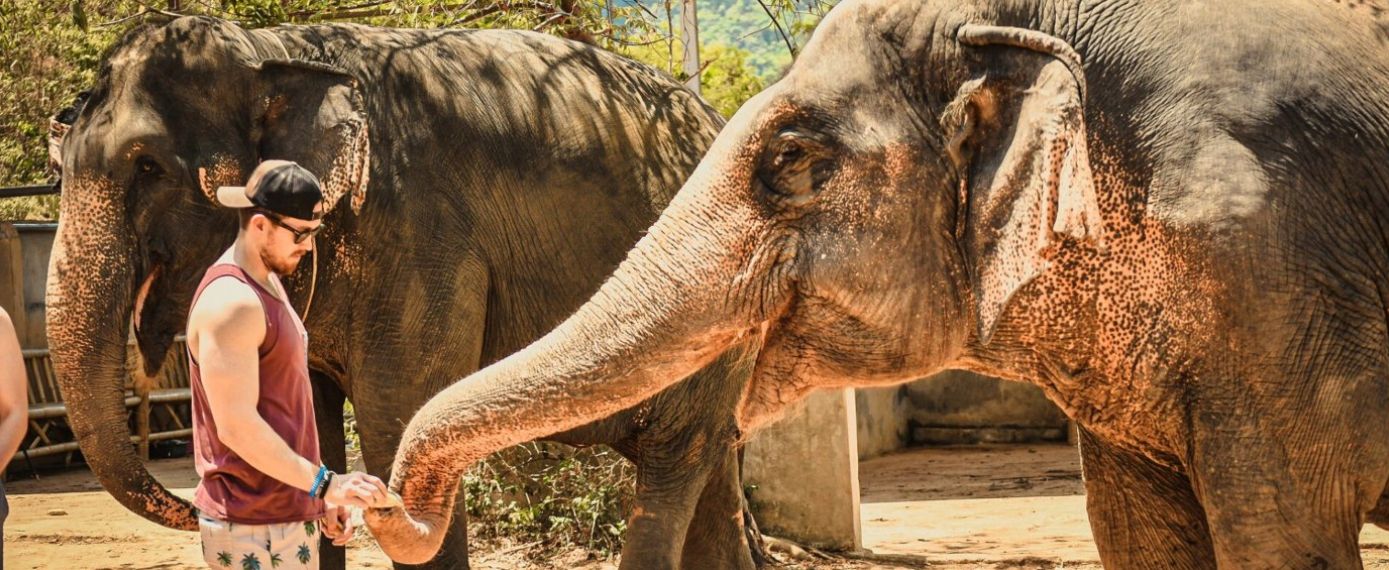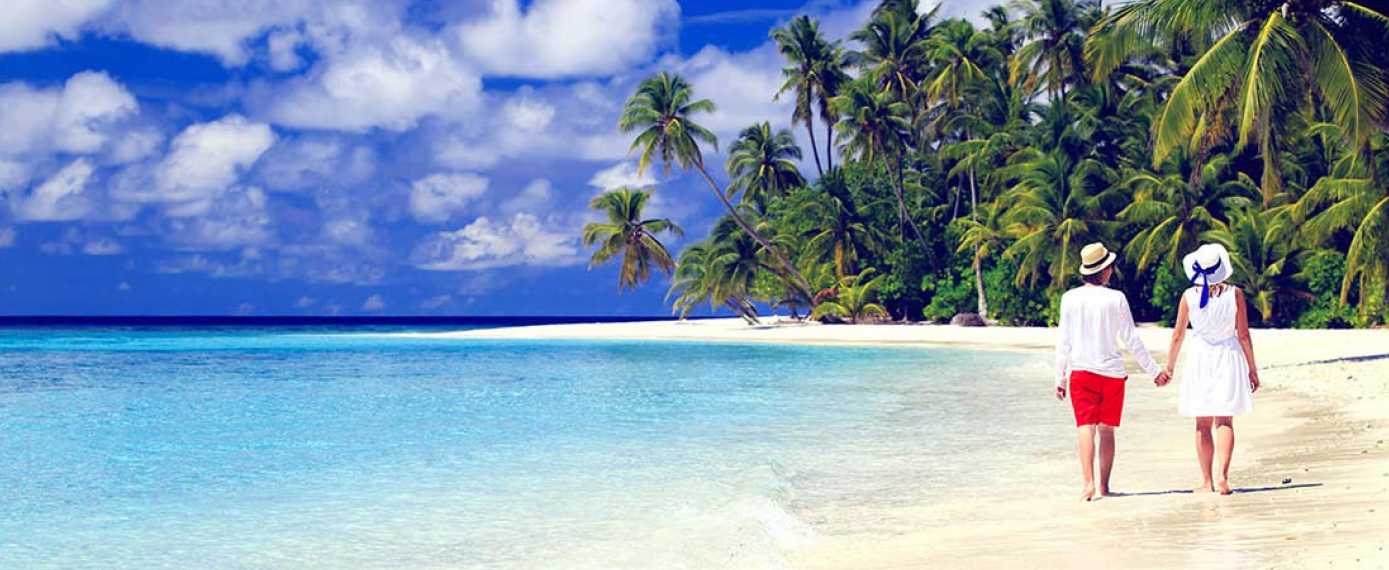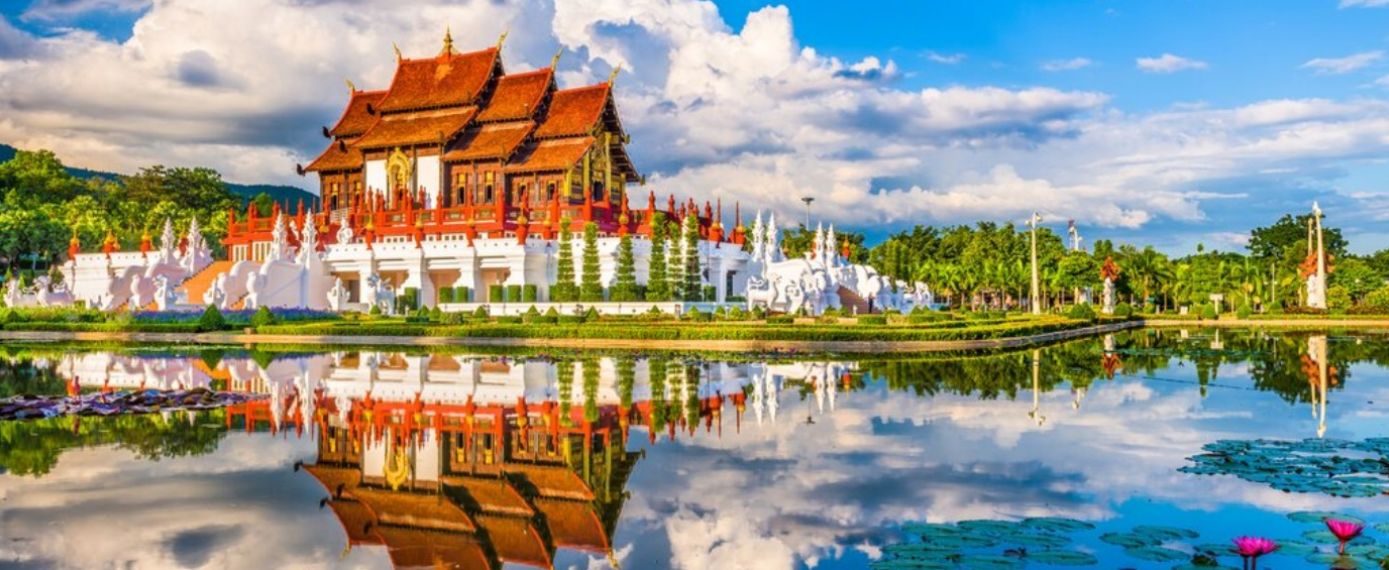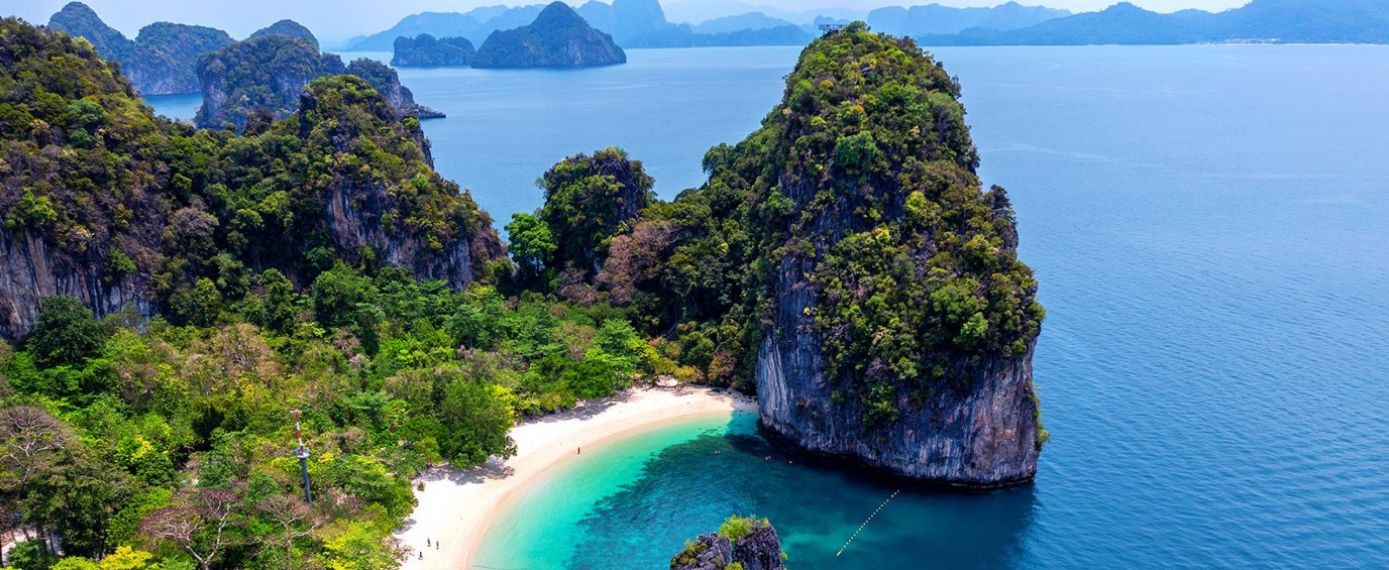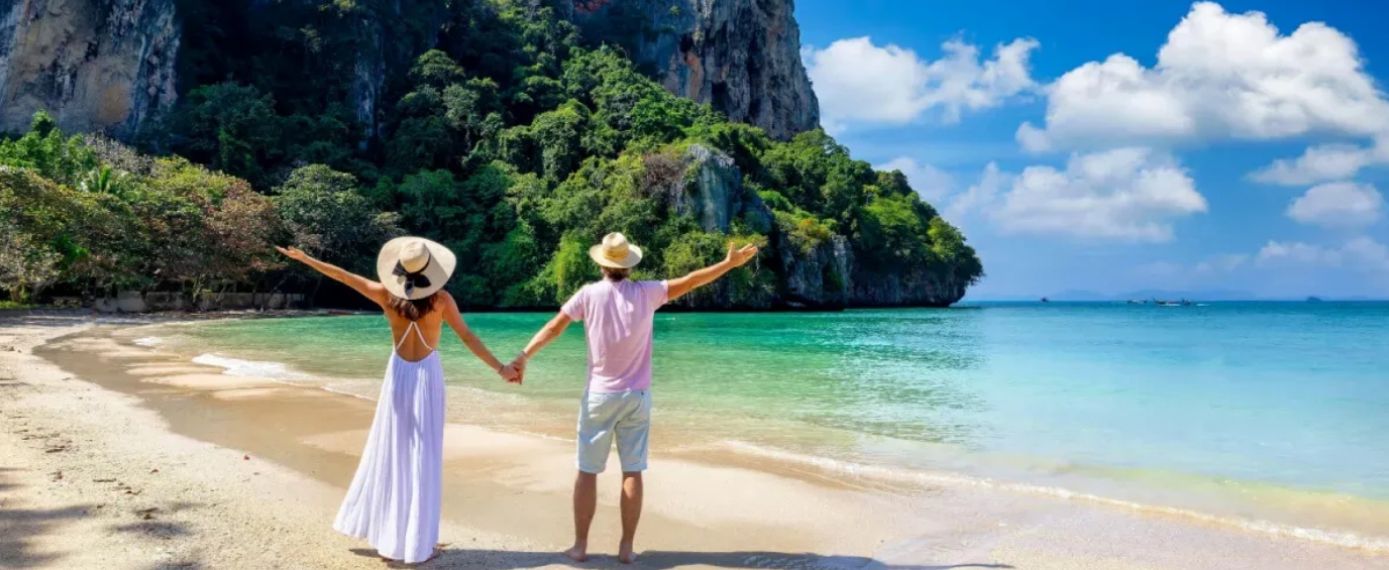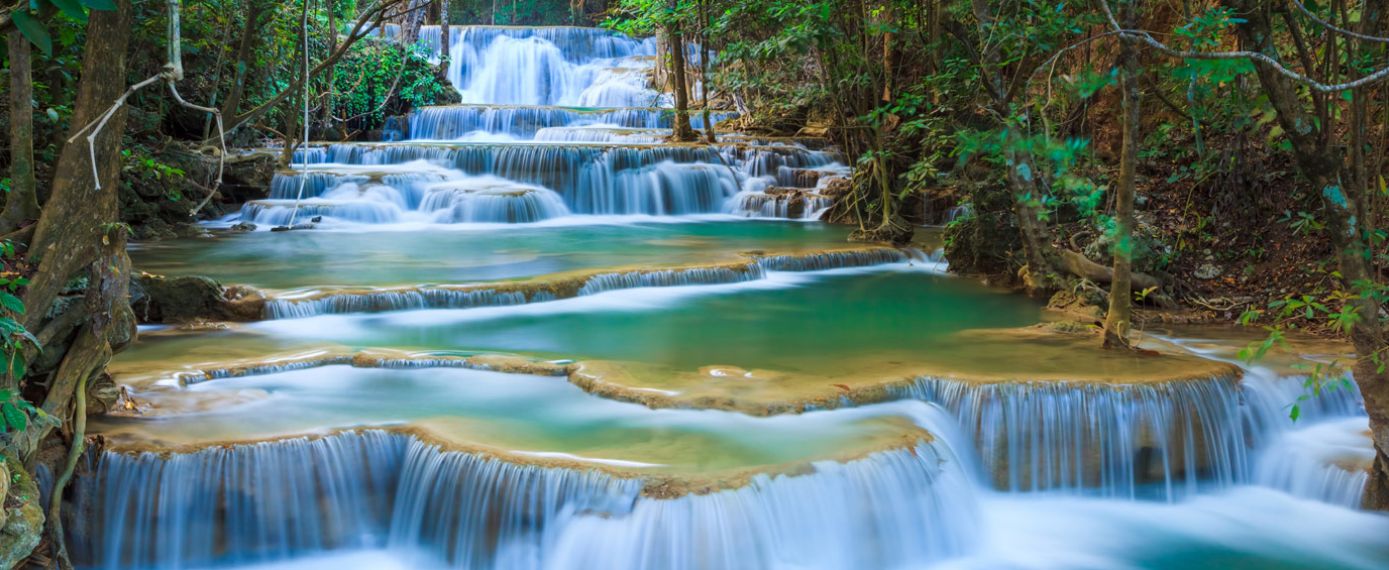Kanchanaburi Tours
Kanchanaburi, located about 150 kilometers away from Bangkok, is a popular escape for those hoping to lose the crowd. This lush province and its pleasant capital is rich in rivers, waterfalls and outdoor adventure. It also occupies a tragic place in World War II history when Kanchanaburi region was the home of a Japanese prisoner-of-war camp. Popularized by the book and movie 'The Bridge on the River Kwai', the infamous bridge and railway is a notable part of the Kanchanaburi landscape. During World War II, Japanese forces used allied prisoners of war (POWs) and conscripted Asian laborers to build a rail route from Thailand to Burma (Myanmar). War cemeteries, museums and the chance to ride a section of the so-called 'Death Railway' draw numerous visitors to this quaint town. As a beautiful town with plethora of diverse attractions, Kanchanaburi is stacked full of great day-tripping opportunities. You can refresh yourself with a swim in one of the many sparkling pools at Erawan Falls; take a stroll down the city's heritage walking street for a look at the different Sino-Portuguese, Thai and Chinese building styles, or explore the famous temple caves built into the limestone hills surrounding Kanchanaburi.
The must sees
Erawan Waterfalls; Death Railway, JEATH War Museums; River Kwai Bridge, Hellfire Pass Memorial; Tiger & Tham Phu Wa Temples; Thai Burma Railway, Sai Yok National Park.
Things to do
Sightseeing, swimming, hiking, trekking, boat trip, rafting, take a train ride.
How to reach
The only way to access Kanchanaburi is by road via long distance intercity bus connections.
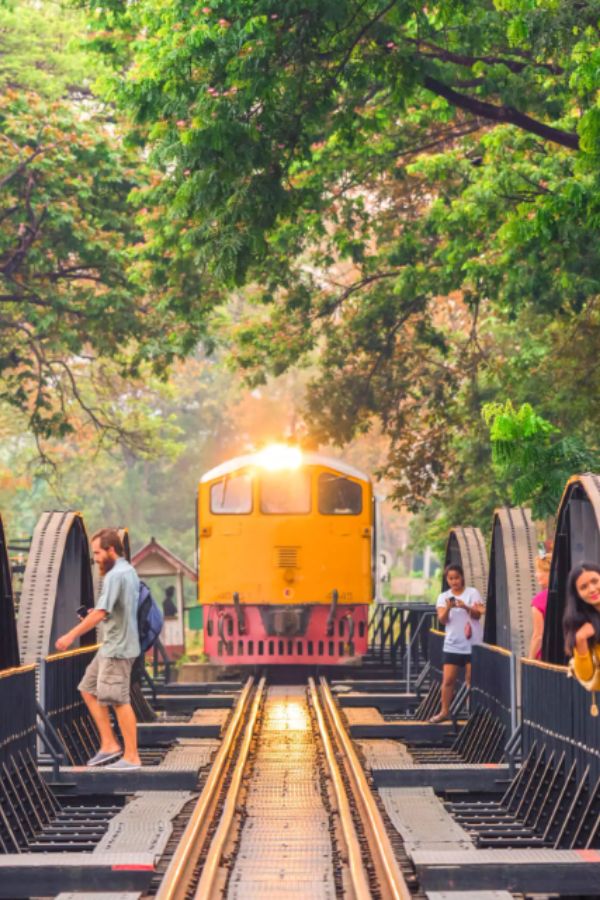
Kanchanaburi. Thailand
Travel back in time and learn about the darker side of Thailand's history during World War II through war-torn landmarks in Kanchanaburi, including the iconic Bridge over the River Kwai, the JEATH War Museum, and the famous Death Railway.
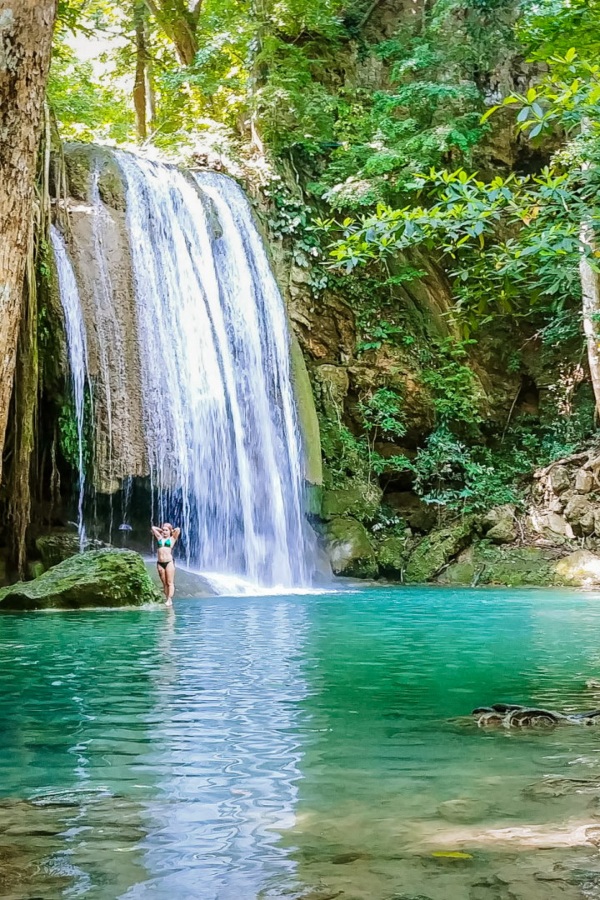
Kanchanaburi. Thailand
Get lost in the beautiful nature of Erawan National Park, one of the most famous natural parks in Thailand, which is home to the impressive seven-tiered Erawan Waterfall, numbers of captivating hiking trails, and abundance of native flora and fauna.
Kanchanaburi TOURS RECOMMENDED FOR YOU
This 20-day Thailand adventure will take you from the bustling streets of Bangkok to the serene island paradise of Krabi, where you'll experience the country's nature, culture, history, and cuisine. Embark on a temple-hopping journey in Bangkok, visit a floating market in Damnoen Saduak, swim in the waterfalls at Erawan National Park, and see a sunset from Pai Canyon. Explore Chiang Mai's mountain temples and get up close with elephants before wrapping up your vacation on Krabi's beaches.
Only From $3680/person
All Inclusive ServiceThis Tour
See colorful life in Thailand and enjoy a comfortable getaway trip across many beautiful sights. Travel from Bangkok, to Chiang Mai and Phuket, and stop at Kanchanaburi, Ayutthaya, and Sukhothai on this charming tour. Explore the vibrant destinations in bustling cities before heading to remote countryside. Stuck up with idyllic sceneries of so many tourist attractions everywhere you go. Have a relaxing time in rural hideouts and pristine islands. The adventure lasts for 16 days will surely fulfill all your exploration needs in your travel life time.
Only From $2592/person
All Inclusive ServiceThis Tour
Make a wealth of memories on this Taste of Thailand itinerary that takes you from north to south for exciting flavors and outdoor adventure. Start in Chiang Mai, where you'll embark on a temple-hopping tour and meet adorable elephants in a natural sanctuary. Head to the central region to jet through Bangkok’s canals by long-tail boat, indulge in the cool waters of Erawan waterfalls, and visit historical sites in Kanchanaburi. Finish in Hua Hin with a foodie tour and free time relaxing on white sandy beaches. This incredible 18-day journey will certainly show you another charm of Thailand and satisfy your tastes.
Only From $3276/person
All Inclusive ServiceThis Tour
Aside from many magnificent beaches, Thailand also offers various cultural and religious sites. Take a tour to have a look deep down onto Thai customs and way of life. On this 13-day tour, tourists can be able to get under the skin of some truly striking targets along the way. Pay a visit to sacred temples and pagodas in Chiang Rai and explore the exceptional park of Chiang Mai and you will have a closer look at the culture and spiritual belief of Asian countries generally and Thailand particularly. Also take short excursions to ancient capital cities of Sukhothai and Ayutthaya, as well as the tranquil scenery of Kanchanaburi. Your Thailand discovery will be packed with joys and mind-boggling moments.
Only From $2236/person
All Inclusive ServiceThis Tour
This 13-day tour is an ideal program for those who wish to explore the culture, history, as well as beautiful nature of Thailand. Besides Bangkok, a buzzing city with street markets, nightclubs, bustling life, luxurious services, this journey will take you to Chiang Mai, a cultural and natural wonderland with ethnic diversity, diverse dialects, traditional values, distinctive architecture, delectable cuisine and classical dances, which you can explore all as taking this special tour. This will surely paint nice memories and let deep impressions in your mind.
Only From $2314/person
All Inclusive ServiceThis Tour
Thailand is a true Southeast Asia travel treasure, with rich culture, outstanding history, numerous religious sites, and heavenly white-sand beaches. On this 12-day journey, you will see Thailand’s must-see natural and cultural gems surrounding the vibrant capital Bangkok, as well as enjoy a relaxing beach getaway in Hua Hin, the seaside town near Bangkok with a lot to discover and unwind. Visit stunning Buddhist temples, stop by floating markets, soak in cool pools of Erawan waterfalls, and interact with friendly locals. Also, culinary culture is a standout feature of this Thailand tour, promising the most special adventure moments in the Land of Smiles.
Only From $2220/person
All Inclusive ServiceThis Tour
Best of Thailand Vacation is the most incredible way to explore this welcoming country! During 18 days, you'll meet adorable elephants in Chiang Mai, take in the stunning beauty of Doi Inthanon National Park, pedal around the ruins of Sukhothai, enjoy a horse carriage ride in Lampang, tour Bangkok by boat, relax on dreamy beaches of Hua Hin, and much more. With a knowledgeable local guide and plenty of authentic experiences, this Thailand journey will be the trip of a lifetime in your travelogue.
Only From $3258/person
All Inclusive ServiceThis Tour
A practical tour to Bangkok - Thailand is a must-do for every traveler who is keen on Asia's beauty and grandeur. Enlightening with many splendid attractions such as Wat Pho and Grand Palace, Bangkok also offers a deep insight into its glorious history and hidden corners. Combining with short excursions to the stunning natural wonders and historical sites of Kanchanburi and Ayutthaya, this is the chance for you to discover the local community and the animated life in the heart of Thailand.
Only From $1176/person
All Inclusive ServiceThis Tour
Thailand is a welcoming destination for honeymooners, with a wealth of holiday delights, from breathtaking temples and tropical beaches to luxury comforts. While you could design your own vacation around the country’s hotspots, we have a 14-day Thailand honeymoon itinerary that loops in the highlights you won't find anywhere else. During two weeks, you and your new spouse will see the vibrant capital, the tranquil central region, and lovely beaches in the south for a romantic getaway. Visit a floating market, get up close with elephants, see historical sites, and relax on the beaches, giving you and your better half a dream trip in "The Land of Smiles."
Only From $2576/person
All Inclusive ServiceThis Tour
On this 15-day tour, you'll explore Northern Thailand, see the hectic city of Bangkok, climb through hillside villages near Chiang Mai, experience the historical train ride in Kanchanaburi, visit the old temples of the Siam Kingdom, and discover Lampang heritage by horse carriage. With welcoming hospitality, local experiences, delicious food, and plenty of free time to explore at your own pace, this adventure will take you into the heart of the country and visit awe-inspiring landscapes that make northern Thailand a destination like no other.
Only From $2625/person
All Inclusive ServiceThis Tour
This suggested 18-day Thailand itinerary is the perfect introduction for first-time visitors to the Land of Smiles. From north to south, it will showcase a good slice of all of the country’s highlights. Begin your journey in Bangkok, seeing the capital’s ancient temples and vibrant streets before heading to the north and exploring hidden treasures at Lampang, Chiang Rai, and Chiang Mai. Wrap up your journey with some relaxing days in Koh Samui, one of the best beach paradises in Thailand. Whether you’re a beach bum, a wellness seeker, or an adventurer, this well-crafted trip will be the best choice for you.
Only From $3330/person
All Inclusive ServiceThis Tour
If you've always wanted to visit Thailand, why not go on a once-in-a-lifetime vacation with your new spouse? Located in Southeast Asia, Thailand is rich with natural splendor and cultural charm, and on this 12-day journey, the country’s serene landscapes and gorgeous cities are sure to give a touch of romance to your honeymoon trip. Find a melting pot of thrilling experiences from the bustling capital of Bangkok to the breathtaking beaches of Krabi. Plus, escape the beaten track for hidden gems in Kanchanaburi and Ayutthaya. Your dream honeymoon trip in Thailand is calling!
Only From $2208/person
All Inclusive ServiceThis Tour
Buckle up for 9 days of culture, nature, and adventure in central Thailand. This thrilling journey allows you to visit a wide range of cultural sights, from breathtaking temples and floating markets in Bangkok to meeting elephants and savoring local food in Hua Hin or discovering wartime history in Kanchanaburi. In between, there will be hiking paths to stunning waterfalls, historical parks, and boating along klongs (canals) of the Chao Phraya River. Travel at your own leisure, sometimes by tuk-tuk, and participate in authentic Thai experiences enjoyed by locals.
Only From $1602/person
All Inclusive ServiceThis Tour
This 20-day Thailand adventure will take you from the bustling streets of Bangkok to the serene island paradise of Krabi, where you'll experience the country's nature, culture, history, and cuisine. Embark on a temple-hopping journey in Bangkok, visit a floating market in Damnoen Saduak, swim in the waterfalls at Erawan National Park, and see a sunset from Pai Canyon. Explore Chiang Mai's mountain temples and get up close with elephants before wrapping up your vacation on Krabi's beaches.
Only From $3680/person
All Inclusive ServiceThis Tour
See colorful life in Thailand and enjoy a comfortable getaway trip across many beautiful sights. Travel from Bangkok, to Chiang Mai and Phuket, and stop at Kanchanaburi, Ayutthaya, and Sukhothai on this charming tour. Explore the vibrant destinations in bustling cities before heading to remote countryside. Stuck up with idyllic sceneries of so many tourist attractions everywhere you go. Have a relaxing time in rural hideouts and pristine islands. The adventure lasts for 16 days will surely fulfill all your exploration needs in your travel life time.
Only From $2592/person
All Inclusive ServiceThis Tour
Make a wealth of memories on this Taste of Thailand itinerary that takes you from north to south for exciting flavors and outdoor adventure. Start in Chiang Mai, where you'll embark on a temple-hopping tour and meet adorable elephants in a natural sanctuary. Head to the central region to jet through Bangkok’s canals by long-tail boat, indulge in the cool waters of Erawan waterfalls, and visit historical sites in Kanchanaburi. Finish in Hua Hin with a foodie tour and free time relaxing on white sandy beaches. This incredible 18-day journey will certainly show you another charm of Thailand and satisfy your tastes.
Only From $3276/person
All Inclusive ServiceThis Tour
Aside from many magnificent beaches, Thailand also offers various cultural and religious sites. Take a tour to have a look deep down onto Thai customs and way of life. On this 13-day tour, tourists can be able to get under the skin of some truly striking targets along the way. Pay a visit to sacred temples and pagodas in Chiang Rai and explore the exceptional park of Chiang Mai and you will have a closer look at the culture and spiritual belief of Asian countries generally and Thailand particularly. Also take short excursions to ancient capital cities of Sukhothai and Ayutthaya, as well as the tranquil scenery of Kanchanaburi. Your Thailand discovery will be packed with joys and mind-boggling moments.
Only From $2236/person
All Inclusive ServiceThis Tour
This 13-day tour is an ideal program for those who wish to explore the culture, history, as well as beautiful nature of Thailand. Besides Bangkok, a buzzing city with street markets, nightclubs, bustling life, luxurious services, this journey will take you to Chiang Mai, a cultural and natural wonderland with ethnic diversity, diverse dialects, traditional values, distinctive architecture, delectable cuisine and classical dances, which you can explore all as taking this special tour. This will surely paint nice memories and let deep impressions in your mind.
Only From $2314/person
All Inclusive ServiceThis Tour
Thailand is a true Southeast Asia travel treasure, with rich culture, outstanding history, numerous religious sites, and heavenly white-sand beaches. On this 12-day journey, you will see Thailand’s must-see natural and cultural gems surrounding the vibrant capital Bangkok, as well as enjoy a relaxing beach getaway in Hua Hin, the seaside town near Bangkok with a lot to discover and unwind. Visit stunning Buddhist temples, stop by floating markets, soak in cool pools of Erawan waterfalls, and interact with friendly locals. Also, culinary culture is a standout feature of this Thailand tour, promising the most special adventure moments in the Land of Smiles.
Only From $2220/person
All Inclusive ServiceThis Tour
Best of Thailand Vacation is the most incredible way to explore this welcoming country! During 18 days, you'll meet adorable elephants in Chiang Mai, take in the stunning beauty of Doi Inthanon National Park, pedal around the ruins of Sukhothai, enjoy a horse carriage ride in Lampang, tour Bangkok by boat, relax on dreamy beaches of Hua Hin, and much more. With a knowledgeable local guide and plenty of authentic experiences, this Thailand journey will be the trip of a lifetime in your travelogue.
Only From $3258/person
All Inclusive ServiceThis Tour
A practical tour to Bangkok - Thailand is a must-do for every traveler who is keen on Asia's beauty and grandeur. Enlightening with many splendid attractions such as Wat Pho and Grand Palace, Bangkok also offers a deep insight into its glorious history and hidden corners. Combining with short excursions to the stunning natural wonders and historical sites of Kanchanburi and Ayutthaya, this is the chance for you to discover the local community and the animated life in the heart of Thailand.
Only From $1176/person
All Inclusive ServiceThis Tour
Thailand is a welcoming destination for honeymooners, with a wealth of holiday delights, from breathtaking temples and tropical beaches to luxury comforts. While you could design your own vacation around the country’s hotspots, we have a 14-day Thailand honeymoon itinerary that loops in the highlights you won't find anywhere else. During two weeks, you and your new spouse will see the vibrant capital, the tranquil central region, and lovely beaches in the south for a romantic getaway. Visit a floating market, get up close with elephants, see historical sites, and relax on the beaches, giving you and your better half a dream trip in "The Land of Smiles."
Only From $2576/person
All Inclusive ServiceThis Tour
On this 15-day tour, you'll explore Northern Thailand, see the hectic city of Bangkok, climb through hillside villages near Chiang Mai, experience the historical train ride in Kanchanaburi, visit the old temples of the Siam Kingdom, and discover Lampang heritage by horse carriage. With welcoming hospitality, local experiences, delicious food, and plenty of free time to explore at your own pace, this adventure will take you into the heart of the country and visit awe-inspiring landscapes that make northern Thailand a destination like no other.
Only From $2625/person
All Inclusive ServiceThis Tour
This suggested 18-day Thailand itinerary is the perfect introduction for first-time visitors to the Land of Smiles. From north to south, it will showcase a good slice of all of the country’s highlights. Begin your journey in Bangkok, seeing the capital’s ancient temples and vibrant streets before heading to the north and exploring hidden treasures at Lampang, Chiang Rai, and Chiang Mai. Wrap up your journey with some relaxing days in Koh Samui, one of the best beach paradises in Thailand. Whether you’re a beach bum, a wellness seeker, or an adventurer, this well-crafted trip will be the best choice for you.
Only From $3330/person
All Inclusive ServiceThis Tour
If you've always wanted to visit Thailand, why not go on a once-in-a-lifetime vacation with your new spouse? Located in Southeast Asia, Thailand is rich with natural splendor and cultural charm, and on this 12-day journey, the country’s serene landscapes and gorgeous cities are sure to give a touch of romance to your honeymoon trip. Find a melting pot of thrilling experiences from the bustling capital of Bangkok to the breathtaking beaches of Krabi. Plus, escape the beaten track for hidden gems in Kanchanaburi and Ayutthaya. Your dream honeymoon trip in Thailand is calling!
Only From $2208/person
All Inclusive ServiceThis Tour
Buckle up for 9 days of culture, nature, and adventure in central Thailand. This thrilling journey allows you to visit a wide range of cultural sights, from breathtaking temples and floating markets in Bangkok to meeting elephants and savoring local food in Hua Hin or discovering wartime history in Kanchanaburi. In between, there will be hiking paths to stunning waterfalls, historical parks, and boating along klongs (canals) of the Chao Phraya River. Travel at your own leisure, sometimes by tuk-tuk, and participate in authentic Thai experiences enjoyed by locals.
Only From $1602/person
All Inclusive ServiceThis Tour

With over 15 years of experience, our team will help you choose the perfect for your adventure.

Authentic

Flexible

Persionalized

24/7 Support


Other Thailand DestinationS
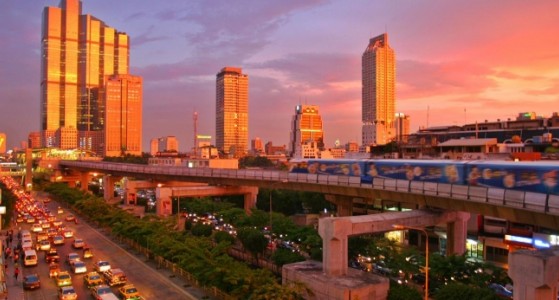
Buzzing, humid and energetic, Bangkok is the city where magnificent temples, historic markets, skyscrapers and rooftop bars create an intoxicating vibe that's hard to resist. The city is a mesmerizing blend of old and new, East and West, and dizzying contradictions. Historical sites next to vibrant nightlife areas, bustling markets near modern shopping malls, and street food vendors close to world-class restaurants. Hence, the city is still fascinating for its traditional culture. Saffron-robed monks weave among the morning rush hour to collect alms; communities dwell in stilt houses by the Chao Phraya River, eking out a living using centuries-old skills. A city tour in Bangkok often begins in Rattanakosin, drawn by the Grand Palace and Wat Pho. It's here the Chao Phraya River separates the city proper from its old capital Thonburi, a spot where quitet, narrow canals and floating markets illustrate why Bangkok was once called 'Venice of the East'. East of the canals is modern Bangkok, a hive of activity with countless businesses, markets and shopping malls handily connect by the BTS Skytrain. As a city that feels alive day and night, Bangkok is the destination for all, from foodies, shopaholics, culture seekers, history lovers, urban explorers, even party animals. That makes the well-known Southeast Asian gateway one of the world's most visited cities.
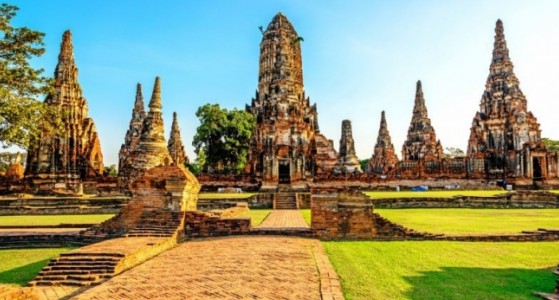
Ayutthaya, short for Phra Nakhon Si Ayutthaya, was once the capital of the ancient kingdom of Siam. It not only plays an important role in Thai's history but was also made a UNESCO World Heritage Site in 1991. Founded in 1350 and became the biggest city in the world by 1700, its wealth generated by trade with countries from all over Asia, the Middle East and Europe. However, it all came to an end in 1767 when war with Burma led to the devastation of the city. It was almost burnt to the ground and the capital of Siam moved to Bangkok. Nowaday, most of the ancient remains are on the western half of the island called the Ayutthaya Historical Park. There are temples, royal palaces, museums and more which are easy to explore on foot, by bike or tuk tuk. The most iconic sight of Ayutthaya resides in Wat Mahathat or the Temple of the Great Relic. Its signature is the tree root with a Buddha head embraced in it and no one knows exactly how it was made. Also worth a visit is the royal temple of Wat Phra Si Sanphet which was the original home of the Emerald Buddha, now located in the Grand Palace in Bangkok. Wat Phra Si Sanphet is the largest and one of the most famous temple in Ayutthaya which was once used for royal ceremonies and contained the ashes of royal family members. For an overview of Ayutthayan-style art, visit the Chao Sam Phraya National Museum, which holds well-preserved statues recovered from the ruins. There are beautiful bronze Buddhas dating from the 13th and 14th centuries, 17th- and 18th-century door panels with religious, traditional or floral carvings, and a hoard of 15th-century gold jewellery.
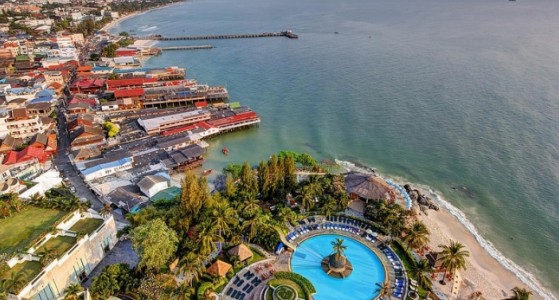
If you begin to feel boring at Thailand as you have travelled all destinations as Pattaya, Phuket, Chiangmai or Koh Samui, let's try visiting Hua Hin to enjoy more experiences of this country. This is a beautiful peaceful beach which is not crowded and very lovely.
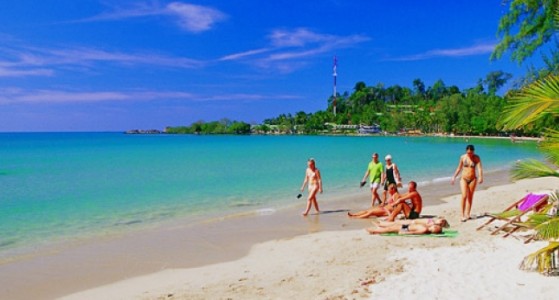
Koh Chang, ('Elephant Island' in Thai language) is the third largest island in Thailand and part of the Mu Ko Chang National Park. Compared to the bustling Phuket and Samui islands, Koh Chang offers a more peaceful and laid-back atmosphere, making it an ideal destination for travelers seeking to avoid the crowds. With a natural palm-fringed coastline, a mountainous jungle-clad interior and stunning coral reefs just offshore, this island is a nature lovers’ paradise for swimming, snorkeling, diving. Visitors also can join a boat tour to explore the coral reefs as well as barracuda and the occasional sea turtle amongst the brilliantly colored coral. Or spend time in an elephant camp feeding, bathing and playing with friendly elephants. As a part of the Mu Ko Chang National Park, over 70 percent of Ko Chang remains virgin rain forest which is home to jungle clad mountains and many waterfalls. The famous Klong Plu and Than Mayom waterfalls are among them. The national park features some hiking trails, either short trails to waterfalls and mangrove forests or longer and more challenging trails deeper inside the jungle. Located 20km south of Koh Chang, Koh Rang island is the main snorkeling and diving spot in the Mu Ko Chang National Park.
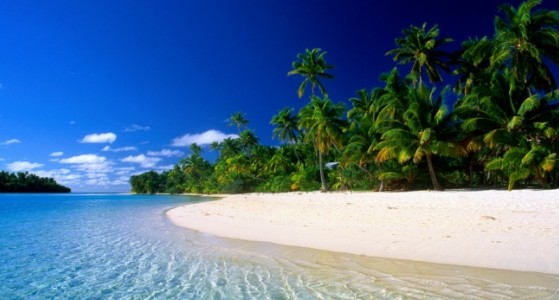
Pattaya is the largest city of Chon Buri Province as well as the biggest tourist-oriented city in Thailand. Attracting huge influxes of tourists annually, this coastal city is famous for big shopping malls, and countless bars, clubs, and coastal hotels & resorts. If you’re expecting a trip with both sun-sand-sea activities and experiencing the busy life of a tourist hub, there is nowhere in Thailand better than Pattaya.
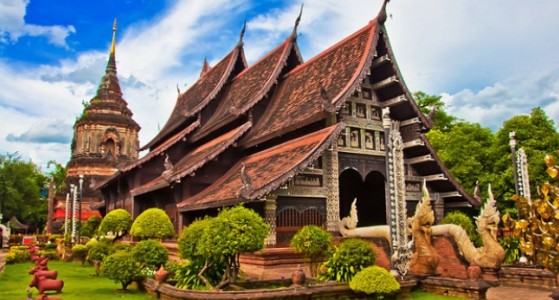
Fame as 'the rose of the North', Chiang Mai is an alluring city brimming with glittering temples, lush jungle, delicious streetfood and the bustle of lively markets. As the gateway to the mountains in northern Thailand, Chiang Mai has grown far beyond the medieval city walls that once marked it as the ancient capital of Lanna Kingdom. Nevertheless, its temple-lined backstreets still conjure up the glory of the old empire and it is still possible to get a feel for Chiang Mai's Thai culture and traditions. Ancient shrines and traditional wooden houses jostle for space with boutique hotels, stylish restaurants and trendy bars of this northern town as well as its welcoming customs and laidback pace of life leads to a rising footfall of enthusiastic tourists with each year. Home to a vast number of national parks, lush tropical jungles, hidden waterfalls, stunning rivers, and animal sanctuaries, Chiang Mai is an unmissable stop-off point for many outdoor adventure-seeking travellers. From trekking to the villages of Thailand's hill tribes to other adrenaline activities including mountain biking, white-water rafting, rock climbing expeditions and zip-lining through the rainforest canopy that makes Chiang Mai a perfect getaway.
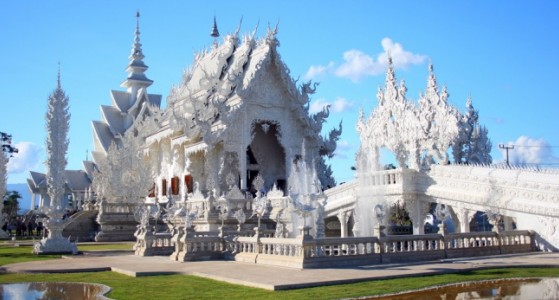
Chiang Rai is a mountainous region in northern Thailand, bordering Laos and Myanmar. It is also a part of the Golden Triangle where Thailand, Laos, and Myanmar meet at the Mekong River and serves as an excellent base to explore the region. Like any famous Thai city, Chiang Rai abounds with temples which are part of the day to day life of its inhabitants. Most well-known among them are White and Blue Temples. The former is the most popular landmark in Chiang Rai for its uniquely designed structure representing life, death, and rebirth — important parts of the Buddhist cycle of life. The latter painted entirely in blue color symbolizing serenity and wisdom, something you don't see every day in a temple, is home to Buddhist-style patterns and illustrations of Buddha's life cycle, depicting hell and heaven. Surrounded by stunning mountain ranges and thick rainforest, Chiang Rai is a great base for visiting hill tribes and scenic mountain trekking. There’s a range of diverse options from short treks, visits to a waterfall or a viewpoint, as well as a visit to a traditional hill tribe community still living among the jungle-covered mountains to gain an insight into their way of life.
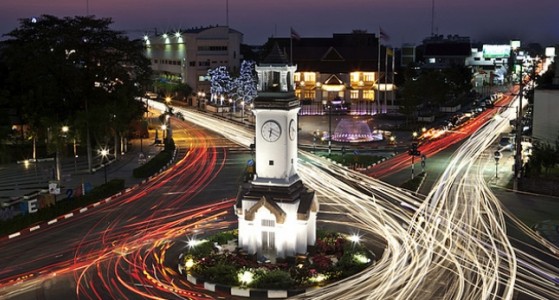
Lampang is a northern province where is the only place in Thailand permitting horse carriage in tourist activities. Situating in a valley surrounded by mountain ranges with a height of 268.8m above the sea level, Lampang is an enchanting stop to the North with a vast beauty of nature, culture, and history. If you’re in Northern Thailand and seeking for something authentic and peaceful, less-crowded Lampang would be a great destination.
View more

Customize Kanchanaburi tours


Adventure Travel Trade Association


American Society of Travel Agents


Family Travel Association


TripAdvisor


The guardian


World Travel Awards
ABOUT US
Why Us Trusted Travel Company What Makes Us Different Meet Our Team Southeast Asia Travel Guide Southeast Asia Tour Highlights Pre-departures Deposit & Payment Cancellation Policy Terms and Conditions Contact UsOur Destinations
Vietnam Tours Cambodia Tours Thailand Tours Indonesia Tours Malaysia Tours Philippines Tours Laos Tours Singapore Tours Myanmar ToursMulti-country
Vietnam Cambodia Tours Vietnam Cambodia Laos Tours Vietnam Thailand Tours Vietnam Cambodia Thailand Tours Thailand Malaysia Tours Thailand Malaysia Indonesia Tours Indonesia Thailand Tours Indonesia Malaysia Vietnam Tours Southeast Asia Tours 26 - 30 Days Southeast Asia Tours 18 - 26 Days Southeast Asia Tours 12 - 18 DaysTravel Themes
Best Southeast Asia Tours Southeast Asia Heritage & Culture Tours Southeast Asia Nature & Wildlife Tours Southeast Asia Family Tours Southeast Asia Honeymoon Tours Southeast Asia Adventure & Outdoor Tours Southeast Asia Beach & Island Tours Southeast Asia Cruise Tours Southeast Asia Tours 8 - 12 Days Southeast Asia Tours < 8 DaysSOUTHEAST ASIA TRAVEL COMPANY LIMITED
As local Southeast Asia Tour experts with over 15 years of experience, Southeast Asia Travel company has built a solid reputation as experts in designing custom tours across Southeast Asia including Vietnam, Laos, Cambodia, Thailand, Singapore, Malaysia, Indonesia, Myanmar, Philippines... Every Southeast Asia tour we offer is exclusively private, ensuring flexibility to suit individual preferences.
Read more